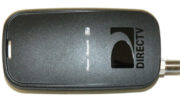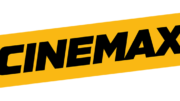I guess I was bored one day back in July, 2015. I had a bunch of DIRECTV parts and darn tootin’ if I wasn’t going to try to make a homemade wireless Genie client out of them. You can read the whole story here.
It kinda worked, back then
I tried two experiments. The first was adding a client that connected over Ethernet using a DECA. If it had worked reliably, this would have been a really good option for people who needed long runs in their homes. The other experiment involved using a wireless DECA to turn a wired client into a wireless one.
The results were ok but not what I’d call ready for prime time. Connection times were really hideous and in the few hours when I played around with each, there were periods of picture freezes and random errors that came and went. But there were also long periods when it worked the way it was supposed to. I think the randomness of the whole thing, and the extra devices involved, caused the problem.
I ended up not recommending that you do this because it just wasn’t reliable. It’s a shame because that would have been a great option for people who needed much longer runs than you can normally get with a Genie.
Why is this a problem?
Well, it isn’t. Not for about 99% of people. But if you’re one of those people with a larger home and the desire for more programming, Genie technology is a sticking point. It’s just not designed for runs longer than 150 feet. There really isn’t a good option for extending those runs. Amplifiers don’t work and in fact they just make things worse.
In the last five years, AT&T has even tightened up their policies on the use of Ethernet. It’s now practically impossible to connect any part of your DIRECTV system using anything but coaxial cable. If you try, it won’t work or you’ll get a rather annoying error. The exception of course is the connection to your router, but they’d still rather you do that over Wi-Fi if you get sufficient speed.
Overall this is part of an initiative to streamline installations and support. They aren’t really looking for people with the “edge cases” anymore and are looking for as many installations as possible to be as similar as possible.
Do you miss the “hobbyist days?” You’re not alone
I started with DIRECTV close to 20 years ago. In those days, home installation was still fairly rare. Local channels were just being added to the service and it was just beginning to take off as a legitimate option for many people. Things were different then. It was a lot more “wild west” and a lot less “proper procedure.” As DIRECTV began to take manufacturing and design in-house, things slowly became more standardized. That wasn’t a bad thing because they also became more stable, but it took a lot of the fun out of it.
Now, there are very few places where hobbyists can get the parts they need to really build the DIRECTV system of their dreams. And when they do, there are very few ways to get their systems activated. Good thing there’s still SolidSignal.com, where you can choose the exact parts you need and get your system activated by the experts. Call us at 888-233-7563 for activation or any support you need.





